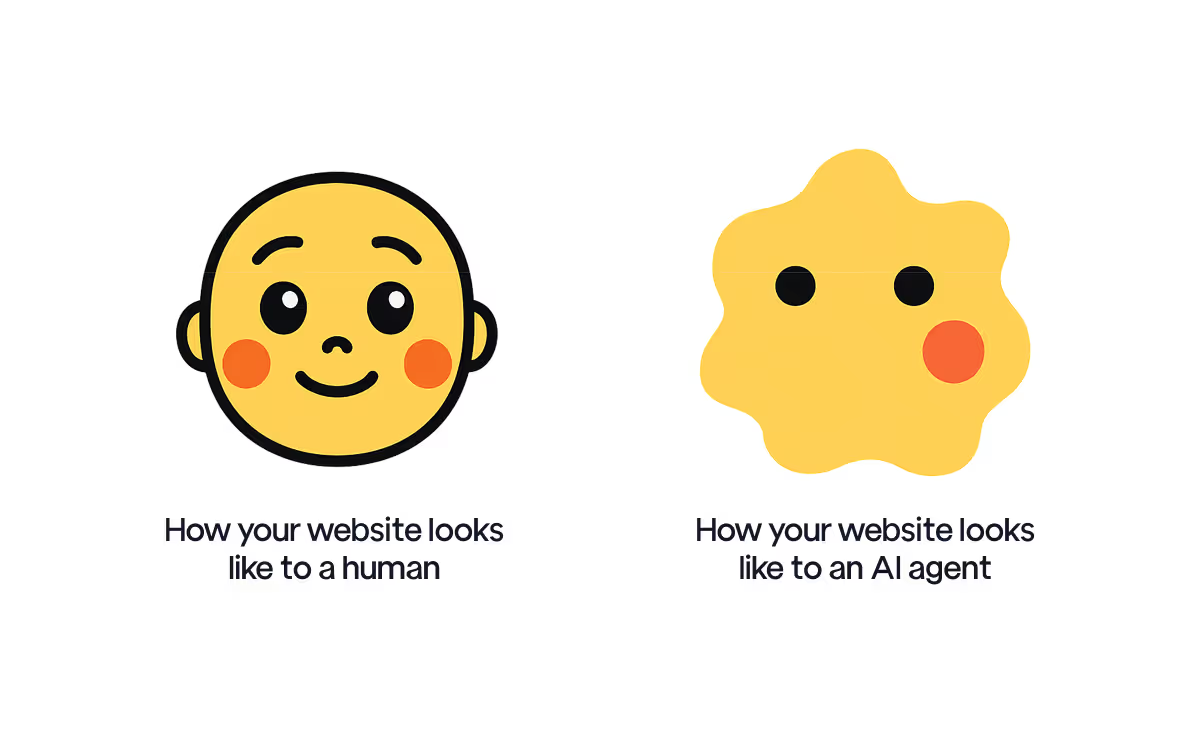For two decades, we optimized websites for humans and for Google.
We structured pages, built backlinks, focussed on keywords for intent, tracked rankings and built internal links. But now, users aren’t browsing search results. They’re getting answers from ChatGPT, Gemini, Perplexity and Claude. And unless AI knows your brand deeply you’re out of the conversation. SEO got you ranked. AEO gets you included.
AI doesn’t show search results. It delivers synthesized answers.
If you’re not part of that answer — you don’t exist.
And most brands... don’t.
Zero Click searches jump by 5% as AI Overviews roll out
.avif)
You might still get tons of traffic with all the SEO investments you have made in the short run - but the truth is, users will be throwing extremely complex questions to the web and are going to “resolve and leave” directly from ChatGPT or Google without ever needing to visit the website.
AI agents are becoming the new gateways to information. Consumers are posing questions like:
- “Which payroll vendor supplies native integrations with QuickBooks and Netsuite for businesses under 100 headcount?”
- “What commercial EV charger maintains >95 % efficiency at warehouse ambient temperatures above 45 °C?”
- “Will engaging a fractional CMO reduce marketing campaign cycle time for B2B SaaS firms targeting mid-market accounts?”
Search flow is shifting from Googling to asking questions to AI models, because of the deep context these models gain from massive training data and their sharper grasp of user intent. Correspondingly, user behavior has moved from scanning ten blue links to absorbing concise, bullet-style paragraphs crafted around the exact question.
But, here's the catch: AI Crawlers don't crawl your site daily like Googlebot. They rely heavily on pre-ingested data. If your updates, testimonials, or new products aren't part of that data… you simply don't exist to them.
Traditional SEO — keywords, backlinks, structured metadata — still matters. It can help you rank and get picked up by the RAG layer [Retrieval Augmented Generation] on top of AI models [PS: RAG is a technique that enhances the capabilities of AI Models by integrating an information retrieval system like Google or Bing Search on top of pre-fed data].
But it’s no longer enough. To reliably show up in AI answers in relevant contexts, AI models need to know a hell lot more things about you than it knows now — whether an AI is drawing from its memory or fetching from the web on demand.
Every release note, API document, case study, testimonial, thought leadership opinions, pricing, limitations, social media posts or even customer feedback video now needs to exist not just for people — but for AI systems to learn from, interpret, and confidently recommend you in the right context.
The Invisible Problem: Your Brand Is Missing

Most brands today are invisible to LLMs — not because they’re stuck on page-two Google rankings, but because:
- You have not shared enough information about who you are on the web:
Most websites create tons of long-form content and razor sharp landing pages to attract traffic and leads. But, very few of them have an exhaustive feed of information which informs the AI models about “who” you are as a business.
It does not know your location, your org chart, your culture, your pricing plans, the discounts you offer, the kind of customers you prefer, the features you have, what are your core strengths, how are you different from your competitors, among several other questions.
This significantly limits an AI model's capability to plug your brand in questions that your potential users and buyers are asking.
- Your website content is designed for humans, not for AI agents:
While humans will continue to visit websites to seek information and engage with your “call-to-actions”, we will also see AI crawlers coming to your website very often and you need to make sure your content is visible and readable to them.
More interestingly, AI crawlers can process and understand a lot more unstructured information than humans - so every website has the opportunity to create a high-volume, high-quality feed of content just meant for crawlers alongside their highly curated, but limited blog feeds written for humans.
We believe each company will have another digital asset alongside the website, hosted on a unique domain or subdomain of their existing website, just designed to communicate with AI agents.
- You do not have enough trust signals from authoritative sources:
While the human world remains divided on the impact of citations and backlinks - AI models will not be.
Receiving a link from an authoritative website will continue to be treated as a strong trust signal for AI models as much as it does today for Google’s ranking.
The result? You're excluded from conversations between your customers and AI.
Introducing the AI Visibility Suite - Beta Launch in June ‘25
At Gushwork, we've dedicated the past year to helping brands excel on Google. Now, we’re steering you towards success in the AI realm.
The AI landscape is shifting rapidly. Tactics will keep changing, but the goal stays constant: help the models find, trust, and recommend your brand to relevant buyers.

Here’s the direction we’re taking with the AI Visibility Suite to tilt the odds in your favor:
Core Modules
AI Presence Tracker: Know where you’re visible — and where you’re not.
- See where and how your brand appears across leading AI models (ChatGPT, Gemini, Perplexity, and others) vs competitors.
- View the context, sentiment, and competitive benchmarks for every mention.
AI Feeds: Enable the AI models to handle deep questions about your company and your competitors
- An auto‑hosted feed (feeds.yourbrand.com) where you can stream your product updates, releases notes, case-studies, testimonials, sales calls, company updates in a structure LLMs can ingest instantly to build more data points.
Citation Profile: Audit how AI uses your content — and how to get cited more
- Identify which of your resources AI models reference.
- Check citation accuracy and authority, with guidance on boosting credibility and reach.
AI Query Insights: See what your buyers are asking AI
- Analyze the real questions users ask AI in your domain.
- Surface emerging topics and align content strategy to proven demand.
LLMs.txt Auto‑Updater: Keep AI models in sync with your latest resources.
- Generates and maintains an llms.txt file at your root domain.
- Lists key resources and crawler rules to keep models current on your latest content.
Join Us in the Shift
If you're a Gushwork customer, you're already on the path to AI visibility.
Starting June 2025, our Pro Package customers will get default access to certain parts of the AI Visibility Suite, with a gradual rollout to Growth Package customers in the following months.
If you’re not yet a customer — now is the time to get ahead. The way people discover, evaluate, and choose businesses is changing fast. In an AI-driven world, being present in answers matters more than just showing up in results.


















.webp)








.webp)

.svg)


.svg)
.svg)
.svg)







.svg)